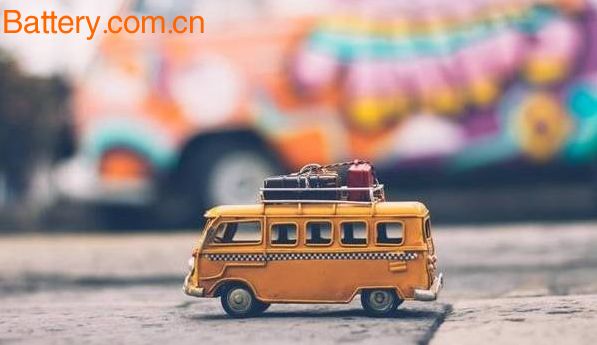In combination with the current market situation of the power battery industry and the time node of CATL's announcement of the listing guidance, we believe that the power battery market has reached the middle.
So, what is the current market situation and how will it change in the future?

First, bid farewell to "small scattered"
At present, the problems faced by China's lithium battery industry are mainly low concentration, lack of technology accumulation and innovation, resulting in serious dispersion of resources and disorderly market competition. This makes China's lithium battery industry always big and not strong, unable to optimize resource allocation, unable to form a standardized and orderly market structure, and can not form a synergy when competing with the outside.
CATL started the listing process, and mainstream battery manufacturers have expanded their production capacity and will further increase the brand concentration of the power battery market.
The data shows that the current market share of the top five power battery companies such as BYD, CATL, Waterma, Guoxuan Hi-Tech and Tianjin Lishen has reached nearly 70%.
In addition, in the industry view, the road to cost reduction for power battery companies is not a short-term process of one year or two, but a long-term process. Because the new energy vehicles are gradually declining, the state has already confirmed that subsidies will be cancelled by 2020.
Due to the subsidies for new energy vehicles and the rising prices of upstream raw materials, power battery companies are under pressure from both sides. Large enterprises can scale production to reduce costs, but the survival of some small manufacturers will become difficult. The "small, scattered, chaotic" power battery companies that have been blooming all over the country will be eliminated in the market competition.
Second, to meet the impact of car companies
In the second half, with the international mainstream car companies such as Volkswagen and BMW joining the self-built battery factory queue, the “smashing battle†of the power battery market began.
Recently, Daimler invested 500 million euros to build a super lithium battery factory in Germany, becoming the largest battery production base in Europe to date. It is understood that the production base battery will be supplied to its automotive business and the home energy storage system invested by its Mercedes and VivintSolar companies.
Since Tesla announced the construction of a super battery factory, mainstream car companies at home and abroad have also accelerated the pace of building a power battery factory. It can be found that in addition to Daimler and Tesla, 8 domestic and foreign car companies such as Volkswagen, BMW, SAIC, Lifan and Huatai have been laid out in advance. Moreover, it is expected that Tesla and Geely's self-built battery plants will be officially put into production in the second half of this year.
Undoubtedly, the "spoiler" of car companies will inevitably lead to more fierce competition in the power battery market. After the elimination of "big fish eat small fish" and "fast fish eat slow fish", the power market will also move towards a real maturity.
Third, three feet are facing differentiation
There will be great variables in the competitive landscape of China, Japan and Korea. With the increase in the number of self-built battery bases in Europe, the competitiveness of power batteries from the European market should not be underestimated; Tesla also plays a pivotal role in the new energy vehicle market.
For Japanese and Korean battery companies, their domestic market share is not large.
According to the latest news, China Jinshajiang Capital acquired Nissan's battery business for about US$1 billion. In the future, the proportion of Japanese battery companies will be lower.
We believe that China will continue to dominate the new energy vehicle market, and the proportion of Japanese and Korean battery companies will gradually decline, with Europe and the United States accounting for a growing trend.
The competition pattern of power batteries in China, Japan and Korea is likely to evolve into a competitive situation between China, Japan, Korea and Europe.
4. Who can dominate the future?
The power battery industry is still very fragmented, similar to the memory competition landscape of the early 2000s. After 15 years of industry consolidation, only three leading players in the memory industry still exist: Samsung Electronics, SK Hynix and Micron, which have accounted for more than 77% of the global memory market, while Samsung Electronics has a market share of 36%. first place.
In the next 15 years, when the penetration rate of electric vehicles will increase from the current 1% to 50% in 2030, similar industry integration will also occur in the power battery industry. Panasonic, LG Chem and Samsung SDI are slightly ahead of the technology and customer base and are likely to become the next Samsung Electronics.
Will CATL, which will be listed soon, will welcome more development opportunities, as well as China's veteran powerhouse BYD, or other highly promising Chinese power battery companies, will be able to seize the opportunities of Chinese government policy support, technological innovation, corner overtaking ?
Jack Screw is material brass, aluminum, stainless steel, carbon steel and so on .
It with a variety of drive and head styles available, such as slotted, hex, socket head, pan head, round head and fillister head. They are used for fastening two or more drilled pieces together securely, while easy removal and re-assembly.Jack Screws used wildly in Electronic .
if you have interested ,you can give us the drawing or request ,we can producted it .
Jack Screws
Jack Screws,Hex Nut Jack Screw,Hexagon Jack Screws,Aluminum Jack Screws
Shenzhen Long Wei Wang Precision Technology Co., Ltd. , https://www.electronichdwe.com